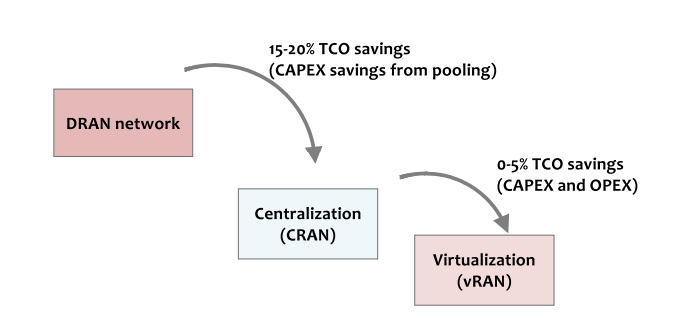Virtualized radio access networks (vRANs) are a way for telecommunications operators to run their baseband functions as software. One of the primary benefits of virtualizing radio access networks (RANs) is that RAN functions no longer require special proprietary hardware to run, and can instead be run on standard servers. This is achieved by applying the principles of virtualization to RAN and is usually one part of a larger network function virtualization (NFV) effort, this statement is quoted by RedHat.
The savings associated with Virtualization are all connected with other things that are happening in the mobile network. Centralization of the network is already taking place, with significant savings from pooling that allow for less money spent on DU and CU compute resources.
Mobile Experts detailed the savings for CRAN in their research report and noted that the actual savings can vary from about 5% to 30%, depending on the cost of fiber and other local factors. They show a 15-20% savings as per the below figure, to reflect a typical scenario for a highly developed telecom network in East Asia or the United States with strong fiber availability.

If the operator only takes this step by itself (comparing a centralized network with dedicated hardware to a centralized network with virtualized DU and CU), the savings is minimal. In fact, in some cases, the initial cost of a macro base station deployment might be a bit more expensive for the vRAN case, but operational savings over an 8-10 year life will bring small net savings to the operator.
Virtualization saves significant costs across the life cycle of a network with many upgrades, even if the savings are not obvious at the beginning.
